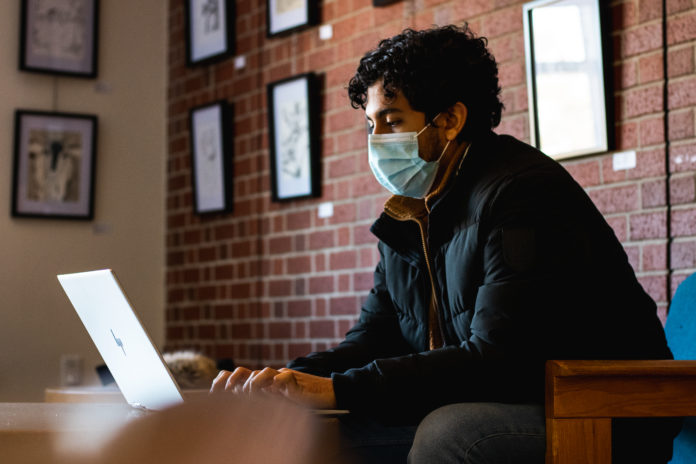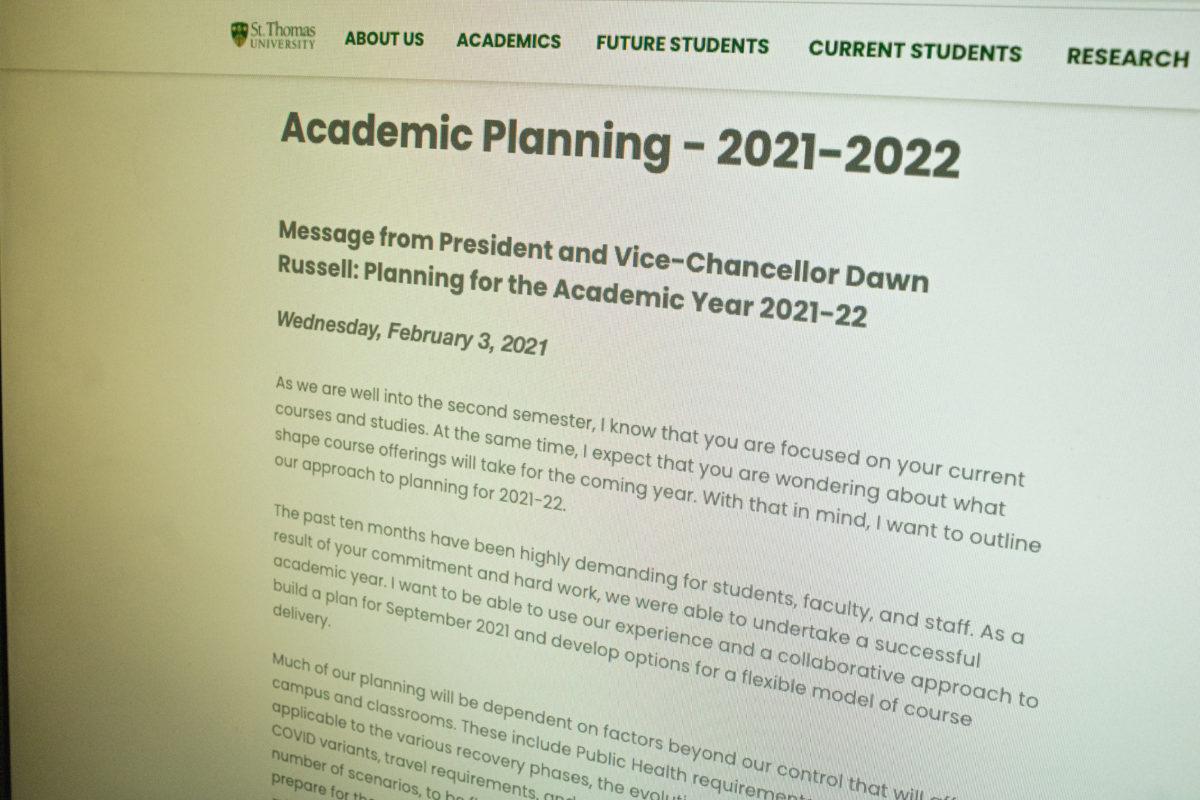

When Reinaldo Cascante, a second-year St. Thomas University international student, learned that STU finalized an approach to plan for the next academic year, he was “thrown off” by what he read.
Cascante, who plans to major in communications and public policy with an honours in sociology, said he was expecting more solid answers rather than an outline of STU’s approach. He said the statement was vague and unclear.
“I was expecting to hear what the university had planned for the next year,” said Cascante. “As an international student, I would like to know what the procedures would be [and] how I should structure my next year.”
STU announced in a statement on Feb. 3 it finalized an approach to plan for the next academic year, which could involve in-person learning, online learning or a blended model. In the statement, STU outlined a timeline for decisions to be made with a decision on the fall semester to be finalized between May to June of 2021.
Dawn Russell, president and vice-chancellor at STU, said in the statement the year has been “highly demanding” for students, staff and faculty. Much of the school’s plans, she said, depend on Public Health guidelines, travel restrictions and vaccine rollout.
“It is prudent for us to plan for a number of scenarios, to be flexible and to make timely decisions,” wrote Russell. “Our guiding principle remains the same as we consider all options — as always, the safety and health of students, faculty, and staff will be paramount.”
Jeffrey Carleton, STU’s associate vice-president communications, said university administration began conversations surrounding the next academic year at the end of November. When staff returned from the winter holidays, they began to determine their process.
Over the last several months, Carleton said the university learned a “tremendous amount” about COVID-19 and the impact that remote teaching and learning had on STU. It includes making sure stakeholders, students and faculty understand its timeline when planning for the fall.
“We wanted to make sure that people would start the year off knowing that we had a process in place for how we were going to make the decision for September, who was involved in making the decision and what would be a general timeline for the decision,” said Carleton.

Carleton said the ad hoc senate committee, which has representatives for students and staff, has been meeting every week to discuss what “practical” options are available for September. That includes conversations about in-person classes, online learning or a mixture of both.
While those discussions take place, associate vice-president of enrolment Ryan Sullivan and director of student services Brock Richardson will look at ways residence could be set up, such as operating food services and campus activities.
Both teams would report back to the university to deliver their findings to Kim Fenwick, vice-president academic and research, and registrar Karen Preston, in March. Once they do, Carleton said Fenwick and Preston would sit down with the vice-presidents and Public Health to look at further plans.
Carleton said STU decided to release its statement about the upcoming school year after receiving questions from current and future students and parents. He said it gave those individuals the chance to understand the school’s timeline and decision-making process.
Carleton said STU is spending about $600,000 on remote learning tools over the next three years based on the university’s cost projections. He said having those tools gives the university flexibility for September.
He said if STU returns to in-person classes, interested students and professors can still engage in remote learning and teaching. Whatever the circumstance, Carleton said the university would rely on those tools in some form.
As for international students who might be worried about not being able to return to Canada after increased travel restrictions, Carleton said the university would work with students on a case-by-case basis to come up with solutions if they couldn’t come to New Brunswick.
Carleton said whether STU chooses to go with in-person or online learning, reevaluating through the year would be an option based on Public Health guidelines.
“If we did go down that path, we’d have to make our decision for January early enough so people who wanted to travel to New Brunswick have the opportunity to do so,” he said.
Cascante said online learning has been easy until the beginning of the winter semester. While he still completes assignments to pass the classes, sometimes he’s unmotivated to watch lectures or finish readings since he doesn’t feel like he has the time. He said he misses in-person elements like connecting with other students and professors.
While he’s staying hopeful for in-person classes next year, Cascante said whatever method ensures the safety and wellbeing of his peers is more important to him. Still, he’s not sure how well other students would respond.
“I would be able to handle it, but it would just be another disappointment,” said Cascante. “Although online learning gives us safety … it creates a lot more workload and a lot more stress than people or the university could think of.”
